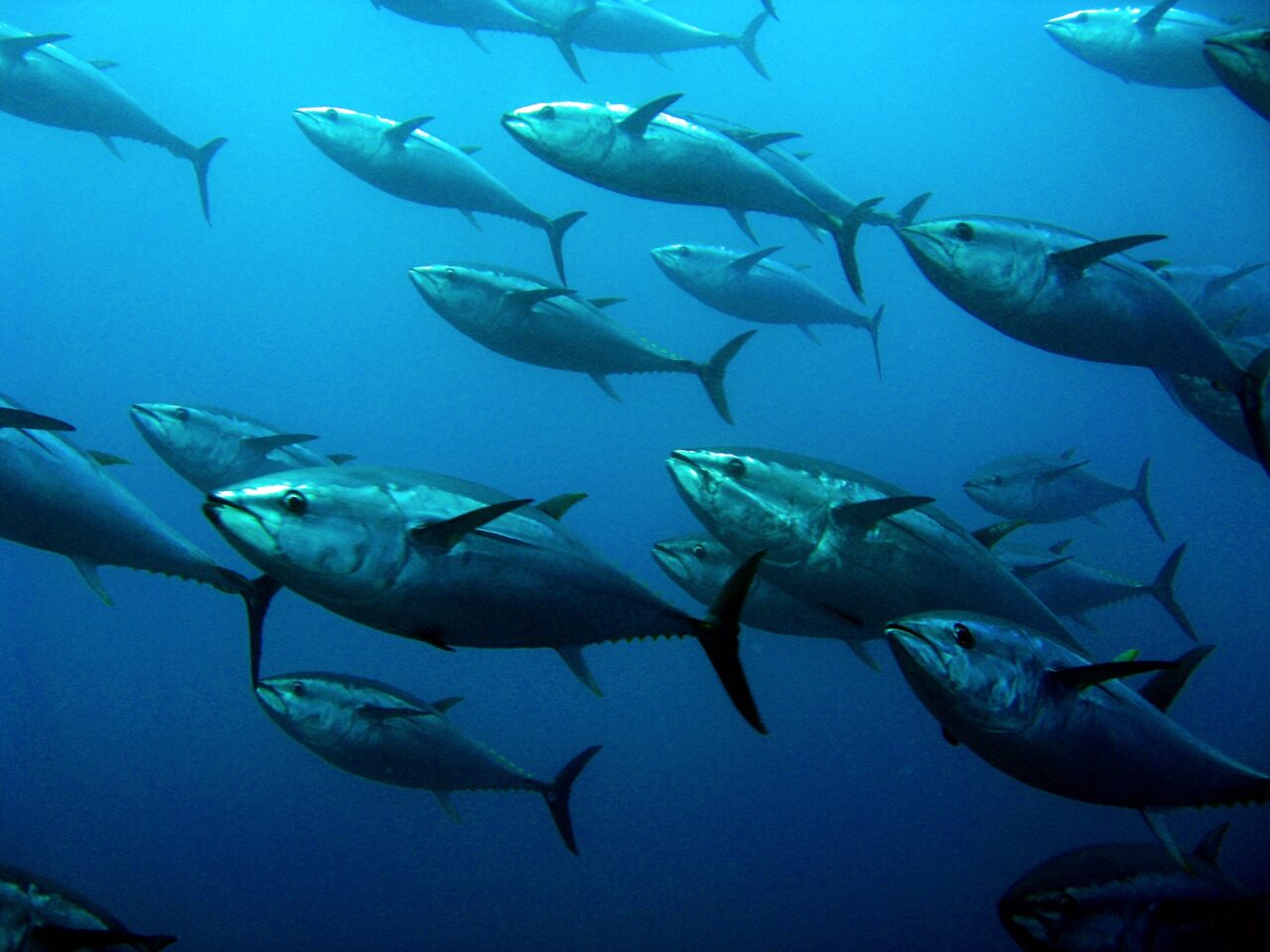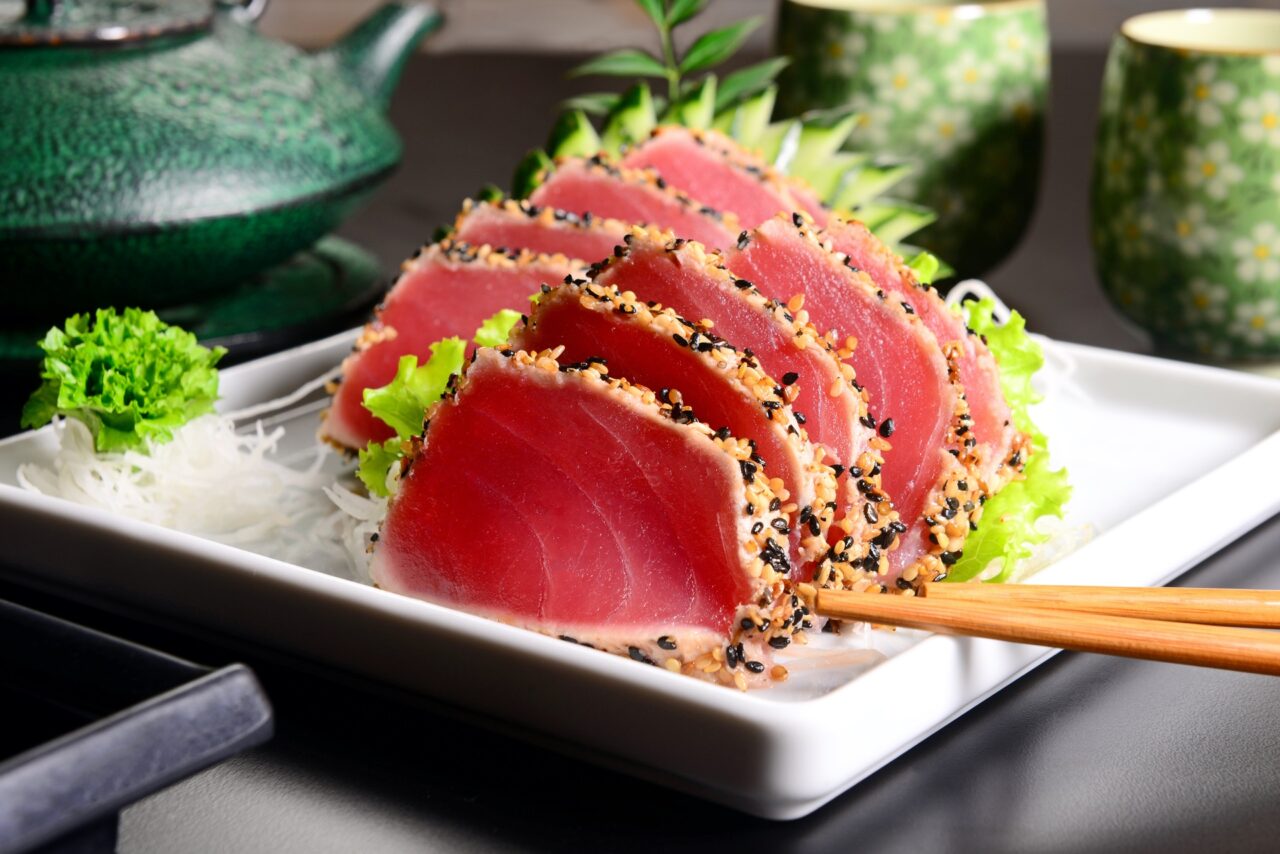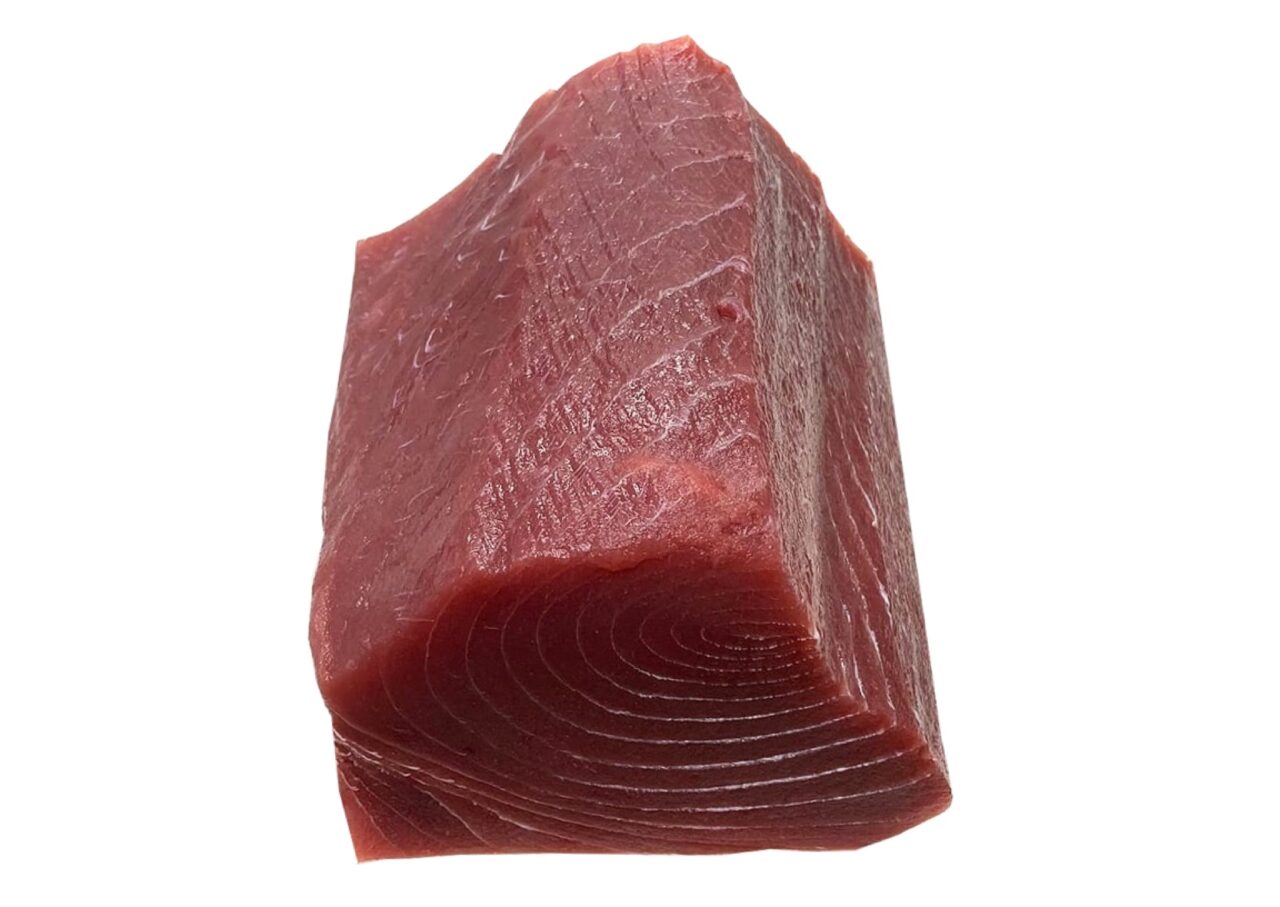Nederlands
English
Deutsch
Français
It started with the Netflix documentary ‘What the Health’ and ended (for now) with ‘Seaspiracy’ – today’s food is under constant scrutiny. But which of all these claims are actually true? Is it still possible to casually enjoy a delicious tuna steak, sashimi or some fresh tuna sushi? And if so, how do you know if the tuna you buy has been caught responsibly?
Are you a buyer looking for fresh tuna, and do you want to be assured of the right quality? This article will tell you all the ins and outs of tuna and what to look out for when ordering this popular product.
Topics covered in this article include:
Most people do not know any better than that there is only one tuna species, or two at the most. However, this is far from the truth: there are no less than twenty different tuna species in the world. These mainly live in the Atlantic Ocean, the Pacific Ocean and the Mediterranean Sea. Tuna can also be found in the North Sea from time to time.
Tuna belongs to the mackerel family (Scombridae). Mackerel is smaller and has a shorter life cycle than tuna. Not only do they belong to the tuna family, but they are also a food source for tuna. Tuna also consume squid, herring, whiting, and anchovies, among other fish.

Tuna can grow up to 4.5 metres long and can live up to 40 years. Today, the average tuna only lives to the age of two years. When there was no mass fishing, tuna weighing up to 900 kilos were sometimes caught. The average weight of tuna has decreased over the years. A tuna of 200 kilos is considered an excellent catch these days. On average, tuna caught nowadays weigh between 40 and 80 kilos.
As mentioned before, in recent years, more and more research has been done regarding food: where does our food come from exactly and what happens to it before it ends up on our plates. This awareness is good and necessary for preserving our flora and fauna, but unfortunately, it is often accompanied by many tall tales.
For example, we are often told that there is hardly any tuna left in the seas. Fortunately, this is not at all true and is only based on the (past) overfishing of the popular bluefin tuna.
However, the overall tuna stock is in good shape. Because of the sound, strict new laws for catching tuna, even the popular and scarce bluefin tuna have returned to the waters. In 2017, after an absence of more than fifty years, a large specimen was caught again in the North Sea; the fish weighed a whopping 206 kilos without its head. Given the scarcity and popularity of the tuna, the fish was sold for 18,375 euros. However, this does not mean that bluefin tuna is already being fished in abundance again; currently, only one per cent of tuna caught worldwide are bluefin tuna.
What do you have to look out for as a tuna buyer, and what options are there? Fortunately, tuna is not threatened by extinction. There are many other options for purchasing fresh, good-quality tuna. There are at least twenty different species in our seas, and thus enough responsible alternatives for consumption.
The five most popular types of tuna are explained below in detail.
As a result of overfishing, bluefin tuna has been classified as an endangered species. Bluefin tuna is the largest tuna species in the world. This tuna species can be found across the globe. Nowadays, bluefin tuna is mainly replaced by yellowfin tuna.
Yellowfin tuna is perhaps the best-selling fresh tuna today. About a quarter of the world’s tuna catch is yellowfin tuna. This tuna is ideal for eating raw and is therefore primarily used as sashimi or processed in sushi. As the name suggests, the tuna is partly yellow.

Tuna can be found in the Atlantic Ocean, the Pacific Ocean and the Mediterranean Sea throughout the year. Like bluefin tuna, yellowfin tuna can grow relatively large: up to two metres long. This tuna can reach the age of nine years and can weigh up to 200 kilos.
Would you like to buy yellowfin tuna? Are you looking for tuna for sushi, sashimi or tuna carpaccio? Mooijer-Volendam’s yellowfin tuna is exceptionally suitable for this purpose and is always available fresh according to weight. Our yellowfin tuna is also available in tuna fillet steaks, freshly frozen per kilo.
Another good substitute for bluefin tuna is bigeye tuna. This type of tuna also grows to a reasonable size and can be found in several places. Bigeye tuna can reach a length of almost 2.5 metres and live to be eleven years old. Because of its yellow-coloured fins, bigeye tuna is often confused with yellowfin tuna. Like yellowfin tuna, bigeye tuna can weigh up to 200 kilos. Bigeye tuna is not found in the Mediterranean Sea.
White tuna can also grow relatively large and is, therefore, a suitable replacement for bluefin tuna. White tuna(also called Albacore tuna) is of great commercial importance to fisheries. The tuna is not only sold as fresh fish but processed into canned tuna as well. This tuna can grow to a length of almost 1.5 metres and weigh up to 30 kilos. White tuna is mainly found in the North Atlantic Ocean.
Lastly, we have skipjack tuna, also known as bonito. Skipjack is currently the most widely fished tuna species in the world. In contrast to the tuna species mentioned above, skipjack is a lot smaller: often a maximum of one metre, weighing up to 20 kilos. This type of tuna is only processed into canned tuna.
Canned tuna comes in all shapes and sizes. The convenience of this product makes it very popular. The tuna is ready-cooked, has a long shelf life, is nutritious and simply delicious. Therefore, ideal for delicious dishes such as a tuna salad, a pizza topped with tuna and tuna pasta. Canned tuna is also often used in tuna salad, which is available as a ready-made product at Mooijer-Volendam. Mooijer-Volendam sells various kinds of tuna salads in different portions, such as our popular tuna peppadew.
For you, as a buyer, there is plenty of choice between these various types of tuna. As a fish wholesaler, Mooijer-Volendam only supplies AAA-quality tuna products at a reasonable price.
Cooperation between the government, the business community and nature organisations, has led to more sustainable tuna fishing. In all areas where tuna is currently fished, regional organisations focus on the stock levels of tuna. Among other things, they make recommendations on quotas. Also, a minimum weight of 30 kilos per tuna applies. This prevents the fish from being caught before they reach sexual maturity. Furthermore, illegal fishing has been reduced considerably. As a result of the strict supervision of tuna fishing, worldwide tuna stocks are recovering. And that is good news!
Whether a tuna species is sustainable to consume depends not only on the fish stock level but also on the fishing technique used. Sustainably caught fish is certified with the MSC eco-label that is always present on the product you buy. Even when fish is caught with a rod and a hook, this will be indicated separately on the packaging. Tuna caught using the latter method is the best and most sustainable choice.
Fishing methods are constantly being changed and revised to minimise bycatching. The hand fishing method mentioned above is one example: this fishing technique results in very little bycatch and therefore protects the ecosystem.
Other adaptations that have taken place in recent years include fishing with modified hooks, namely J-hooks. These hooks are bent much more inward so that turtles, for example, cannot bite into them. The mesh size of nets was also adjusted so that young fish are not caught and thus can reproduce.
Continuing to look at new fishing methods like this could reduce bycatch by as much as 80% in the future – a great goal.
Bluefin tuna is a tuna species that has been caught in the Mediterranean Sea for over 2,000 years. Both the Romans and the Greeks reported hunting for bluefin tuna. There are even records of Neanderthals who lived at the Strait of Gibraltar 50,000 years ago eating bluefin tuna.
There are countless other fun facts about tuna. We listed the top five for you.

Do you want to know more about Mooijer-Volendam’s full range of tuna products? At Mooijer-Volendam, we have a diverse range of tuna products, available fresh, frozen, canned and processed in different types of salads. All our tuna products bear the MSC quality label.
Are you looking for good-quality tuna products? Then you have come to the right place. As a wholesaler, Mooijer-Volendam sets high standards for its quality, and this also applies to all our tuna products. Our customers can rely on AAA product quality, which is what our customers demand from us.
That is why more and more customers know how to find us as a wholesaler for the hospitality industry or as a wholesaler for fishmongers, speciality stores and large retailers.
Are you curious about all our tuna products?